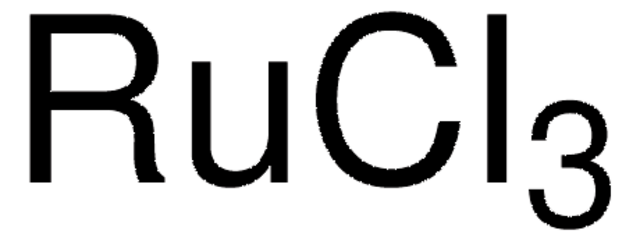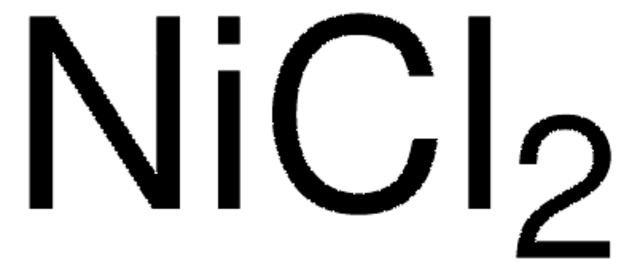378232
Potassium hexacyanoruthenate(II) hydrate
Synonym(s):
Tetrapotassium ruthenium(2+) hexacyanide hydrate
Sign Into View Organizational & Contract Pricing
All Photos(2)
About This Item
Linear Formula:
K4Ru(CN)6·xH2O
CAS Number:
Molecular Weight:
413.57 (anhydrous basis)
MDL number:
UNSPSC Code:
12352302
PubChem Substance ID:
NACRES:
NA.23
form:
powder
Recommended Products
form
powder
Quality Level
SMILES string
O.[K+].[K+].[K+].[K+].N#C[Ru-3](C#N)(C#N)(C#N)(C#N)C#N
InChI
1S/6CN.4K.H2O.Ru/c6*1-2;;;;;;/h;;;;;;;;;;1H2;/q;;;;;;4*+1;;-3
InChI key
FUVXNNWKCOQHNS-UHFFFAOYSA-N
Related Categories
General description
Potassium hexacyanoruthenate(II) hydrate is a crystalline solid commonly used as a source of ruthenium for electroplating applications, as a catalyst in organic synthesis, and as a dye in the textile industry.
Application
Potassium hexacyanoruthenate(II) hydrate can be used as a precursor to synthesize cyano-bridged catalysts for the hydrolysis of p-nitrophenyl phosphate and solar fuel production. It can also be used as a starting material to synthesize ruthenium purple (RP) films on transmissive tin-doped ITO substrates.
Signal Word
Danger
Hazard Statements
Precautionary Statements
Hazard Classifications
Acute Tox. 3 Dermal - Acute Tox. 3 Inhalation - Acute Tox. 3 Oral - Eye Irrit. 2 - Skin Irrit. 2 - STOT SE 3
Target Organs
Respiratory system
Storage Class Code
6.1B - Non-combustible acute toxic Cat. 1 and 2 / very toxic hazardous materials
WGK
WGK 3
Personal Protective Equipment
dust mask type N95 (US), Eyeshields, Gloves
Choose from one of the most recent versions:
Already Own This Product?
Find documentation for the products that you have recently purchased in the Document Library.
Heterogeneous Catalysis of Lanthanoid Ions for the Hydrolysis of p-Nitrophenyl Phosphate Enhanced by Incorporation to Cyano-Bridged Heterometallic Coordination Polymers
Hiroyasu Tabe, et al.
The Journal of Physical Chemistry C, 126, 4365-4373 (2022)
Synthesis, characterisation and in situ colorimetry of electrochromic Ruthenium purple thin films
Roger J Mortimer and Thomas S Varley
Dyes and Pigments, 89, 169-176 (2011)
Natalia Levin et al.
Inorganic chemistry, 59(12), 8272-8283 (2020-05-12)
Ruthenium 4d-to-2p X-ray emission spectroscopy (XES) was systematically explored for a series of Ru2+ and Ru3+ species. Complementary density functional theory calculations were utilized to allow for a detailed assignment of the experimental spectra. The studied complexes have a range
Our team of scientists has experience in all areas of research including Life Science, Material Science, Chemical Synthesis, Chromatography, Analytical and many others.
Contact Technical Service









